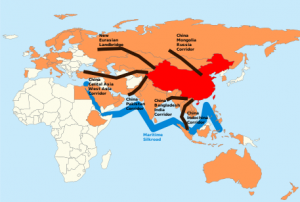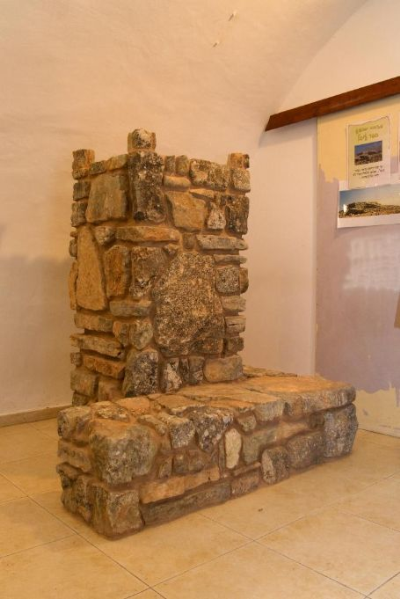WCG, History, and Tithing
Monday, January 28th, 2019
A while back, the anti-COG site, calling itself Banned by HWA, ran an old letter purportedly written by former WCG member Harry Eisenberg opposed to tithing. Here are some extracts:
I was a paid researcher on the staff of Ambassador College for over four years. Generally speaking, my work involved providing “proofs” for the pet concepts and theories held by Mr. Herbert Armstrong and/or his son, Garner Ted. …
In January 1973, I was asked by my supervisor, Brian Knowles, to research the subject of tithing. In particular, Mr. Knowles was interested in learning who paid what to whom and how in ancient Israel.
And so I began a systematic study of the tithing doctrine by listing each Biblical verse which in any way refers to tithing. What followed was a study of commentaries, encyclopedias arid various historical sources. The result was inevitable! I came to see that the tithing concept as promulgated by Ambassador College and the Worldwide Church of God was contrary to both the Old and the New Testaments.
Scripture makes it plain that the right to collect tithes was given to the Levitical priesthood in exchange for their service in the Temple. There is no evidence that this right was ever passed on to the New Testament Church. …
Harry Eisenberg
But are all the claims in that letter accurate?
No.
For those unfamiliar, let me state that the old WCG (Worldwide Church of God) taught three tithes.
That was what the Bible taught as well.
What about historical evidence?
Well, it exists–historical evidence supports the idea of three tithes like the old WCG taught.
It does not matter that Harry Eisenberg purportedly claimed otherwise.
Notice something that the Jewish historian Josephus wrote 1800 years before Herbert Armstrong’s birth:
“Besides those two tithes, which I have already said you are to pay every year, the one for the Levites, the other for the festivals, you are to bring every third year, a third tithe to be distributed to those that want” (Antiquities of the Jews. Book IV, Chapter VIII, Paragraph 22).
Another secular writer confirmed this even earlier in Tobit 1:6-8:
“Taking the first fruits and the tithes of my produce and the first shearings, I would give these to the priests, the sons of Aaron, at the altar. Of all my produce I would give a tenth to the sons of Levi who ministered at Jerusalem; a second tenth I would sell, and I would go and spend the proceeds each year at Jerusalem; the third tenth I would give to those to whom it was my duty”.
Thus, multiple tithes were not an invention of Herbert Armstrong and were understood to exist around the time of Jesus.
The concept of second and third tithe was something that Herbert Armstrong claimed in his 12/17/83 sermon was one of the truths he restored to the Philadelphia era of the Church of God. He claimed that this was one of the truths that the Sardis era did not have, but that at least one of the earlier eras of the Church of God had.
Here is a quote explaining why WCG used to believe that at least part of the Thyatira era of the Church paid multiple tithes:
“The three-part division of tithes paid the Waldensian Church is significant. Even in the 1500’s the same division continued. “The money given us by the people is carried to the aforesaid general council, and is delivered in the presence of all, and there it is received by the most ancients (the elders), and part thereof is given to those that are wayfaring men, according to their necessities, and part unto the poor” (George Morel, Waldensian elder, quoted by Lennard, “History of the Waldenses”). 1. Compare this practice with Num. 18:21 and Deut. 14:22-25, 28-29. Isn’t it exactly what the Bible commands?… Most authors have ASSUMED the “wayfaring men” were the traveling “barbel.” But THEIR expenses would have been paid from the money given the elders, at EVERY time of year, for the direct conduct of the Work — “first” tithe and offerings. Notice that in Numbers 18:21. What Morel then mentions is a “second” tithe, for those traveling to and from the festivals — wayfaring men; and following it, the “third” to the poor. See the explanation in Deut. 14. Feast goers who had more “second tithe” than they needed shared their excess with those who had need, even as they do today! (LESSON 51 (1968) AMBASSADOR COLLEGE BIBLE CORRESPONDENCE COURSE “And the woman fled into the wilderness, where she hath a place …” Rev. 12:6).
Hence, even if one argues that multiple tithing is not necessarily a specific command in the New Testament (anti-Sabbatarians make similar arguments), one should recognize that multiple tithes have been a practice and tradition of the true Church of God for some time. We in the Continuing Church of God do teach first, second, and third tithe. More details on this subject are included in the article Is Second Tithe and Third Tithe Still Valid Today?
The idea of tithing was not foreign to those who originally professed Christ.
Jude, who was based in Jerusalem (his brother James was the bishop there), wrote to “contend earnestly for the faith once for all delivered to the saints” (Jude 3). And this delivered faith would have included tithing.
The Greco-Roman historian Eusebius reported that the first fifteen bishops/pastors of Jerusalem (until c. 135 A.D.) were circumsized Jews who kept the law, etc. (Eusebius. The History of the Church, Book III, Chapter V, Verses 2,3.& Book IV, Chapter 5, Verses 2-4, pp. 45, 71). This means that they also would have tithed and gave offerings similar to how the Jews did (for a short time, c. 67-71, some of the faithful Christians in Jerusalem fled to Pella and then returned).
In the second century, the Jewish authorities in the Tosefta condemned the Judeo-Christians and their tithes (Tofseta Hullin 2:20, as cited in Kessler E. An Introduction to Jewish-Christian Relations. Cambridge University Press, 2010, p. 79), thus signalling that tithing was being done.
Some of the tithe money was apparently used to finance gospel-proclaiming missionaries. Related to the first one or two centuries A.D., notice the following:
The type of Christianity which first was favored, then raised to leadership by Constantine was that of the Roman Papacy. But this was not the type of Christianity that first penetrated Syria, northern Italy, southern France, and Great Britain. The ancient records of the first believers in Christ in those parts, disclose a Christianity which is not Roman but apostolic. These lands were first penetrated by missionaries, not from Rome, but from Palestine and Asia Minor. (Moore, D.V. The Culdee Church, chapters 3 and 4, and Wilkinson, Our Authorized Bible Vindicated, pp. 25, 26 (As cited in Dugger, A History of True Religion, pp. 90-91)
In Palestine, Syria and Asia Minor the churches organized in the apostolic age continued for a long time to be great centres for the propagation of the New Way. (Sell HT. Studies in early church history. F. H. Revell company, 1906. Original from Harvard University, Digitized Mar 24, 2008, p. 52)
The missionaries, most likely, were paid for via tithes from where they originated. It is not likely that many would listen to them if they always arrived in locations broke and had to plead to eat, etc. Some system of tithes and offerings was in place. Notice that the above account shows that the missionaries were sent forth, funded, by those in Palestine and Asia Minor. Up until 135 A.D., the Church of God in Jerusalem of Judea/Palestine was led by those who would have continued with tithes and offerings–and this would have been the case in Asia Minor until around the middle of the third century.
Furthermore, the Apostle John moved to Asia Minor–the Bible specifically tells that he spent time in Patmos (Revelation 1:9). The records of history indicate that John was sent to Patmos by Emperor Domitian, and Eusebius recorded that: “after the tyrant’s death, he returned from the isle of Patmos to Ephesus” (Eusebius. The History of the Church, Book III, Chapter XXIII, Verse 6, p. 56)–Ephesus is in Asia Minor. According to various sources, the Apostle John kept the same practices that the bishops in Jerusalem did, hence he tithed. The Apostle John also warned that those who were truly Christians would keep the same practices he kept (1 John 2:19).
History records that Polycarp of Smyrna passed on to his successors “the canons which he had learned from his youth from John the apostle” (Weidman, Frederick W. Polycarp and John: The Harris Fragments and Their Challenge to Literary Traditions. University of Notre Dame Press, Notre Dame (IL), 1999, p. 444). History also records that Polycarp and his successors kept “Judeao-Christian” practices (Eusebius. The History of the Church, Book V, Chapter XXIV, Verses 2-7, p. 114) as well. This true form of Christianity dominated Asia Minor until the middle of the third century (cf. Eusebius. The History of the Church, Book VII, Chapter V, Verse I, p. 147).
Since we have seen that missionaries were sent from Palestine and Asia Minor; that those in Jerusalem until 135 A.D., Syria until the early third century, and Asia Minor until at least the third century A.D., had what are called “Judeao-Christian” practices, therefore tithing existed in the Ephesus (Revelation 2:1-7) and Smyrna (Revelation 2:8-11) eras of the Church of God.
Notice also the following was written in the early 200s by Origen of Alexandria (who was not Church of God):
That people which was called of old the people of God was divided into twelve tribes, and over and above the other tribes it had the levitical order, which itself again carried on the service of God in various priestly and levitical suborders. In the same manner, it appears to me that the whole people of Christ, when we regard it in the aspect of the hidden man of the heart, Romans 2:29 that people which is called “Jew inwardly,” and is circumcised in the spirit, has in a more mystic way the characteristics of the tribes. This may be more plainly gathered from John in his Apocalyse, though the other prophets also…
Those of the tribes offer to God, through the levites and priests, tithes and first fruits; not everything which they possess do they regard as tithe or first fruit. The levites and priests, on the other hand, have no possessions but tithes and first fruits; yet they also in turn offer tithes to God through the high-priests, and, I believe, first fruits too. The same is the case with those who approach Christian studies. (Origen. Commentary on the Gospel of John, Book I, Chapters 1,3)
In the mid-late 200s, the apocryphal Apostolic Constitution claims that the Apostle Matthias (Acts 1:26) endorsed the payment of first-fruit offerings and tithes ( Apostolic Constitutions (Book VIII, Section IV, Chapter XXX) Translated by James Donaldson. From Ante-Nicene Fathers, Vol. 7. Edited by Alexander Roberts, James Donaldson, and A. Cleveland Coxe. Buffalo, NY: Christian Literature Publishing Co., 1886. The 13th chapter of the Didache (a first or second century document) also seems to support this.
Collier’s Encyclopedia stated:
“TITHE [taith] {O.E. teotha, a tenth}, generally defined as the tenth part of fruits and profits justly acquired, owed to God in recognition of his supreme dominion, and paid to the ministers of region. It is an institution of undetermined antiquity, common to be the Israelitic and many pagan religions. Adopted in principle by the Christian Church from apostolic times … (Collier’s Encyclopedia: With Bibliography and Index, Bernard Johnston (M.A.). 1993, ISBN 0029425484, p.336)
The Catholic Encyclopedia claims:
The payment of tithes was adopted from the Old Law, and early writers speak of it as a divine ordinance and an obligation of conscience (Fanning, William. Tithes. The Catholic Encyclopedia. Vol. 14. Nihil Obstat. July 1, 1912. Remy Lafort, S.T.D., Censor. Imprimatur. +John Cardinal Farley, Archbishop of New York. Robert Appleton Company, 1912. 1 Nov. 2012 <http://www.newadvent.org/cathen/14741b.htm>).
The Catholic bishop and saint Cyprian of the third century wrote about tithing as an obligation (Plowden, Francis. The Principles and Law of Tithing. C. and R. Baldwin, London, 1806, p. 60.):
As this is said of all men, how much rather ought those not to be bound by worldly anxieties and involvements, who, being busied with divine and spiritual things, are not able to withdraw from the Church, and to have leisure for earthly and secular doings! The form of which ordination and engagement the Levites formerly observed under the law, so that when the eleven tribes divided the land and shared the possessions, the Levitical tribe, which was left free for the temple and the altar, and for the divine ministries, received nothing from that portion of the division; but while others cultivated the soil, that portion only cultivated the favour of God, and received the tithes from the eleven tribes, for their food and maintenance, from the fruits which grew. All which was done by divine authority and arrangement, so that they who waited on divine services might in no respect be called away, nor be compelled to consider or to transact secular business. Which plan and rule is now maintained in respect of the clergy, that they who are promoted by clerical ordination in the Church of the Lord may be called off in no respect from the divine administration, nor be tied down by worldly anxieties and matters; but in the honour of the brethren who contribute, receiving as it were tenths of the fruits, they may not withdraw from the altars and sacrifices, but may serve day and might in heavenly and spiritual things. (Cyprian. Epistle 65, Chapter 1. Translated by Robert Ernest Wallis. From Ante-Nicene Fathers, Vol. 5. Edited by Alexander Roberts, James Donaldson, and A. Cleveland Coxe. (Buffalo, NY: Christian Literature Publishing Co., 1886.) Revised and edited for New Advent by Kevin Knight. <http://www.newadvent.org/fathers/050665.htm>.
Later Catholic writers such as Augustine in the fourth/fifth century wrote that tithing was obligatory:
Augustine [Append. Serm. cclxxcii], whose words are quoted 16, qu. i [Can. Decimae], says: “It is a duty to pay tithes, and whoever refuses to pay them takes what belongs to another.” (Aquinas T. The Summa Theologica of St. Thomas Aquinas Second and Revised Edition, 1920. Question 87-Tithes. Literally translated by Fathers of the English Dominican Province Online Edition Copyright © 2008 by Kevin Knight Nihil Obstat. F. Innocentius Apap, O.P., S.T.M., Censor. Theol. Imprimatur. Edus. Canonicus Surmont, Vicarius Generalis. Westmonasterii. APPROBATIO ORDINIS Nihil Obstat. F. Raphael Moss, O.P., S.T.L. and F. Leo Moore, O.P., S.T.L. Imprimatur. F. Beda Jarrett, O.P., S.T.L., A.M., Prior Provincialis Angliae)
It is not that these Catholic sources should be relied on for doctrine that contradicts scripture, but their support suggests that tithing was understood and not a foreign concept among those that professed Christ in the early centuries after Jesus’ resurrection.
Getting back to the Church of God, Jerome recorded that there were people who claimed descent from the Church of God who had fled to Pella from Jerusalem, kept the ‘old law’ and had the “Judeao-Christian” practices of the Sabbath, Holy Days, millenarianism, etc. (Pritz t. Nazarene Jewish Christianity. Magnas, Jerusalem, 1988, pp. 58,62,63. Bagatti, Bellarmino. Translated by Eugene Hoade. The Church from the Circumcision. Nihil obstat: Marcus Adinolfi. Imprimi potest: Herminius Roncari. Imprimatur: +Albertus Gori, die 26 Junii 1970. Franciscan Printing Press, Jerusalem, p. 202). Thus, they too would have tithed. This indicates tithing was still in place towards the end of the Smyra era of the Church of God.
To suggest that this was mainly a pet doctrine of Armstrong’s without historical precedent is in error.
Here is information about a related sermon on tithing which also includes numerous scriptures:
Should Christians tithe? Historically, did Christians tithe? Was biblical tithing limited to agricultural produce? What exactly is a tithe? How does one calculate a tithe? In modern times, should one tithe on their gross or net income? How should salaried people calculate tithes? How should self-employed people calculate tithes? What about retired people? Are there different tithes for different purposes? Did the Jews practice first, second, and third tithe? Does the New Testament discuss tithing? What are the different tithes actually used for? To whom should faithful Christians tithe?
Here is a link to the sermon: Tithes and Tithing.
Some other items of related interest may include:
Tithing Questions and Some Answers Answers questions about tithing and also addresses some non-biblical arguments against tithing. Should people tithe? Here is a link to a related sermon: Tithes and Tithing. Here is a link to an older sermon: Tithing Answers from the Bible.
Ending Your FINANCIAL WORRIES How can people help themselves and others financially? Herbert W. Armstrong wrote this as a booklet on this important subject. A video of related interest would be: Dealing With Financial Worries.
Is Second Tithe and Third Tithe Still Valid Today? Should you save and use second tithe? Some in the COGs no longer teach payment of third tithe, is this biblically correct?
Banned by HWA and Ambassador Watch There are various ones that oppose the Church of God, but they will not prevail (Matthew 16:18). This is an article about some anti-Church of God tactics.
Gambling and Sin: Is it a Sin for Christians to Gamble? What does the Bible reveal? A related video is Gambling: A Covetous Sin?
The Gospel of the Kingdom of God This free online pdf booklet has answers many questions people have about the Gospel of the Kingdom of God and explains why it is the solution to the issues the world is facing. Here are links to three related sermons: The World’s False Gospel, The Gospel of the Kingdom: From the New and Old Testaments, and The Kingdom of God is the Solution.
Where is the True Christian Church Today? This free online pdf booklet answers that question and includes 18 proofs, clues, and signs to identify the true vs. false Christian church. Plus 7 proofs, clues, and signs to help identify Laodicean churches. A related sermon is also available: Where is the True Christian Church? Here is a link to the booklet in the Spanish language: ¿Dónde está la verdadera Iglesia cristiana de hoy? Here is a link in the German language: WO IST DIE WAHRE CHRISTLICHE KIRCHE HEUTE? Here is a link in the French language: Où est la vraie Église Chrétienne aujourd’hui?
Continuing History of the Church of God This pdf booklet is a historical overview of the true Church of God and some of its main opponents from Acts 2 to the 21st century. Related sermon links include Continuing History of the Church of God: c. 31 to c. 300 A.D. and Continuing History of the Church of God: 4th-16th Centuries and Continuing History of the Church of God: 17th-20th Centuries. The booklet is available in Spanish: Continuación de la Historia de la Iglesia de Dios, German: Kontinuierliche Geschichte der Kirche Gottes, and Ekegusii Omogano Bw’ekanisa Ya Nyasae Egendererete.
CCOG.ORG Continuing Church of God The group striving to be most faithful amongst all real Christian groups to the word of God. There are links to literature is about 100 different languages there. To see how CCOG has done so far, here are links to two sermons Continuing Church of God (CCOG) first year anniversary: What has been accomplished? an CCOG: Four Years Revealing Philadelphia? Here is a written link to a version of that first sermon in the Spanish language: Aniversario del primer año de la Continuación de la Iglesia de Dios: ¿Qué se ha cumplido?
Congregations of the Continuing Church of God This is a listing of congregations and groups of the Continuing Church of God around the world.
CCOG.ASIA We in the Continuing Church of God also have the url www.ccog.asia which has a focus on Asia and has various articles in Mandarin Chinese as well as some in English, plus some items in other Asian languages. 我们在继续神的教会也提供此网址 www.ccog.asia, 关注于亚洲并且有各种各样的中英文文章,其中一些用菲律宾语翻译的文章也正在进行中,准备添加到这个网站中。 Here is a link to our Statement of Beliefs in Mandarin Chinese 继续神的教会的信仰声明.
CCOG.IN This is a website targeted towards those of Indian heritage. It has a link to an edited Hindi translation of The Mystery of the Ages and is expected to have more non-English language materials in the future.
CCOG.EU This is a website targeted toward Europe. It has materials in more than one language (currently it has English, Dutch, and Serbian, with links also to Spanish) and it is intended to have additional language materials added.
CCOG.NZ This is a website targeted towards New Zealand and others with a British-descended background.
CCOGAFRICA.ORG This is a website targeted towards those in Africa.
CCOGCANADA.CA This is a website targeted towards those in Canada.
CDLIDD.ES La Continuación de la Iglesia de Dios. This is the Spanish language website for the Continuing Church of God.
PNIND.PH Patuloy na Iglesya ng Diyos. This is the Philippines website Continuing Church of God. It has information in English and Tagalog.
CCOGAfrica channel. This has messages from African pastors in African languages such as Kalenjin, Kiswahili, Embu, and Dholuo.
Bible News Prophecy online radio. This is an audio version of the Bible News Prophecy videos as well as some ContinuingCOG channel sermons. It is also available as a mobile app.
ContinuingCOG channel. Dr. Thiel has produced scores of YouTube video sermons for this channel. Note: Since these are sermon-length, they can take a little longer to load than other YouTube videos.















